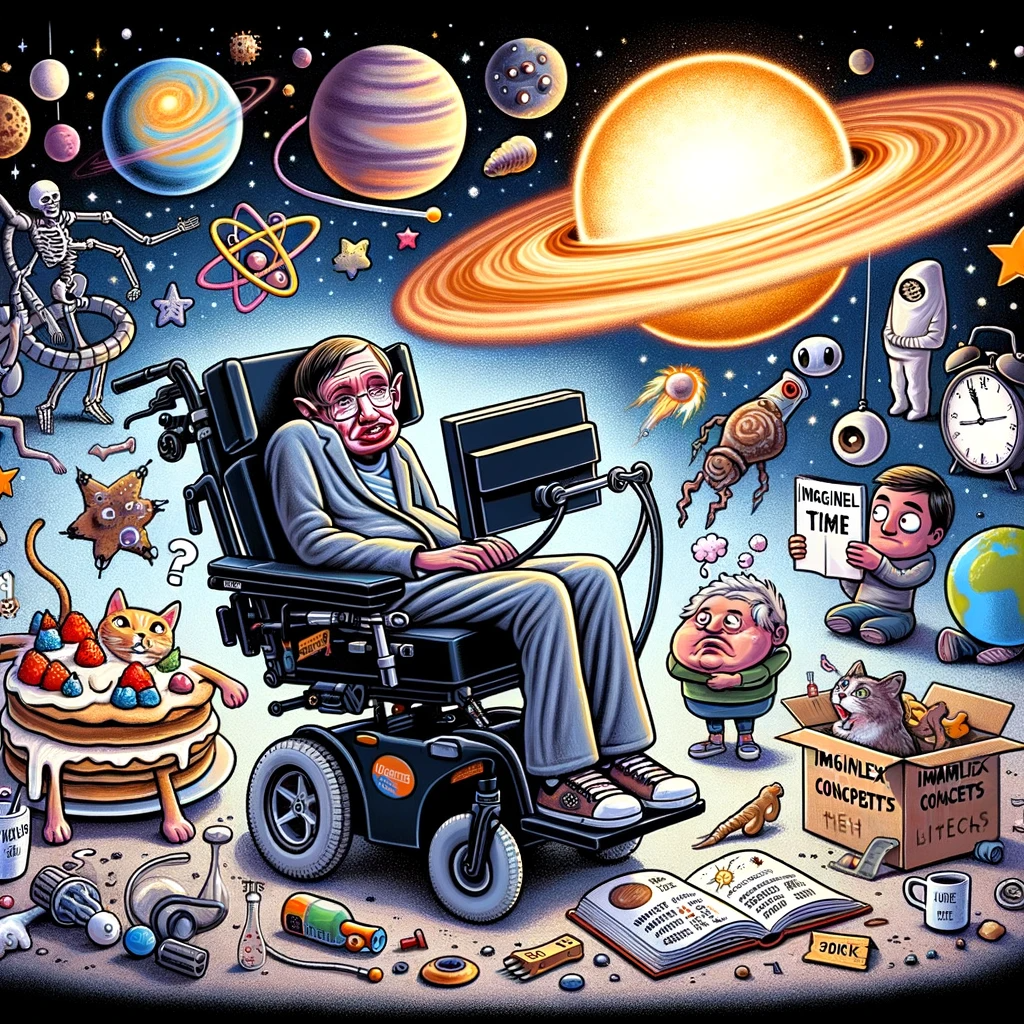“A Brief History of Time”, or as some might call it, “A Quick Glance at All of Existence as We Know It – Now Condensed into a Light Read for Your Sunday Afternoon”. Stephen Hawking, brilliant physicist and master of understanding things that most of us would need several lifetimes to even begin to grasp, decided to gift humanity with a book that delves into the deepest mysteries of the universe. You know, just some light reading to pass the time.
Firstly, hats off to Mr. Hawking for attempting to explain the entirety of the universe’s history in a ‘brief’ manner. To truly appreciate the audacity of this task, imagine trying to summarize the entire plot of “Game of Thrones”, including every minor character and subplot, in a single tweet. Yep, it’s kind of like that.

In the book, Hawking starts us off with a history of how humans have viewed the universe over time. It’s a tour from the days when we believed Earth was a flat pancake (hopefully with syrup) to understanding it as a tiny speck in an unimaginably vast cosmos. To be fair, back in those days, the concept of a round Earth was as mind-boggling as thinking of pineapple as a legitimate pizza topping today.
We then transition into the world of light and its speed – the universal speed limit. Nothing’s faster, not even those pesky teenagers on their skateboards. This leads us into relativity. Put simply, it’s the idea that time can speed up or slow down depending on how fast you’re moving. It’s like when you’re waiting in line at the DMV, and every second feels like an eternity, but when you’re playing video games, hours fly by in minutes.
Hawking then hits us with the Big Bang theory – and no, not the TV show. He paints a picture of the universe’s birth, an explosion that created everything from nothing. It’s like the ultimate magic trick, where instead of pulling a rabbit out of a hat, you get an entire universe out of… well, nowhere.
Black holes make an appearance, of course. Not the kind you find when you lose socks in the laundry, but vast regions in space where gravity is so strong that nothing, not even light, can escape. Think of them as cosmic vacuum cleaners, sucking up everything in their path. They’re the universe’s way of tidying up, a Marie Kondo on a galactic scale.
Hawking also talks about quarks, those tiny particles that sound like something you’d find in a Dr. Seuss book. These minuscule bits are the building blocks of everything, and they come in types like “up”, “down”, “charm”, and “strange”. No, seriously, those are their names. It’s like physicists decided to have a little fun for once.
The book delves into the nature of time, questioning if it has a beginning or an end. Is there a cosmic clock ticking somewhere? Or is time just an illusion, like that fake Rolex you bought on vacation? Hawking explores these questions, making us ponder our place in this vast universe.
There’s a bit about imaginary time, which isn’t just when you pretend it’s 5 o’clock somewhere. It’s a concept that’s as confusing as assembling furniture from IKEA without the instruction manual. But in essence, it’s a way to smooth out the wrinkles in our understanding of the cosmos.
Towards the end, Hawking discusses the search for a unified theory that ties everything together. Imagine trying to find a single explanation for why toast always lands butter side down, why cats are obsessed with boxes, and why we can’t find matching socks. It’s the cosmic version of that.
In “A Brief History of Time”, Hawking tries to bridge the gap between the super-smart science folks and the rest of us mere mortals. It’s a bit like someone fluent in Klingon trying to teach Shakespeare to a class of preschoolers. The effort is commendable, even if the result leaves some of us scratching our heads.
In essence, the book is a journey through time, space, and the occasional black hole. It’s about understanding our universe, from the tiniest particles to the vastness of galaxies. And while some concepts might go over our heads like a high-speed comet, it’s a reminder of the wonder and mystery of existence.
So, there you have it, “A Brief History of Time”, squeezed into a not-so-brief summary. A testament to humanity’s quest for knowledge, our insatiable curiosity, and our penchant for naming tiny particles after whimsical concepts. It’s the universe, explained – sort of. And if all else fails, at least we know there’s probably a black hole out there, holding onto all our missing socks.